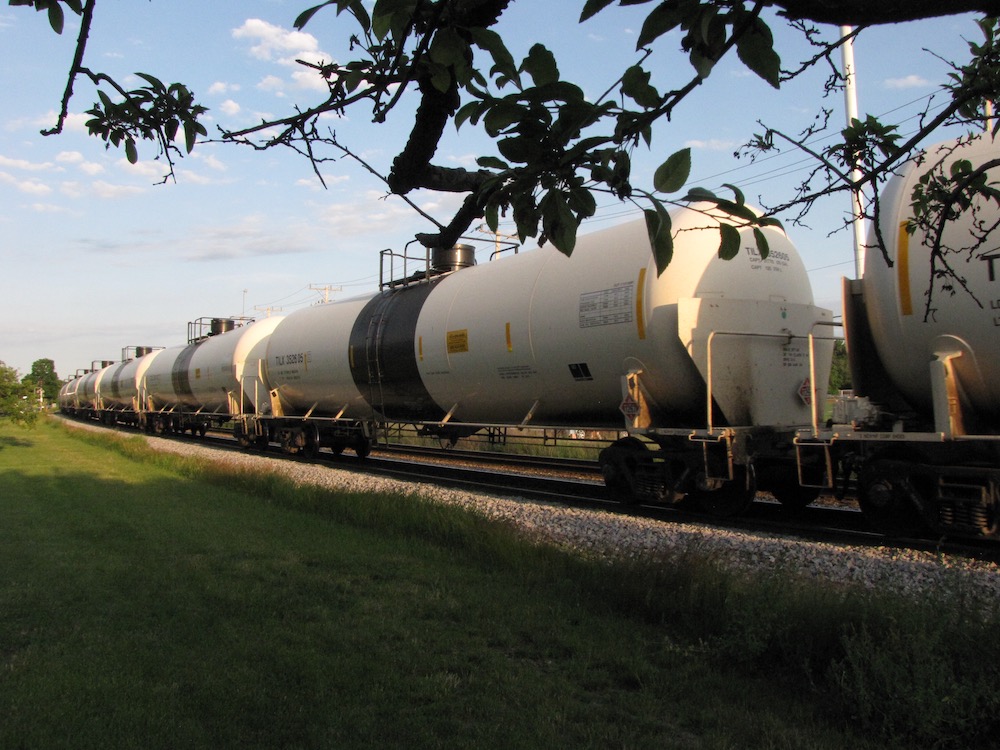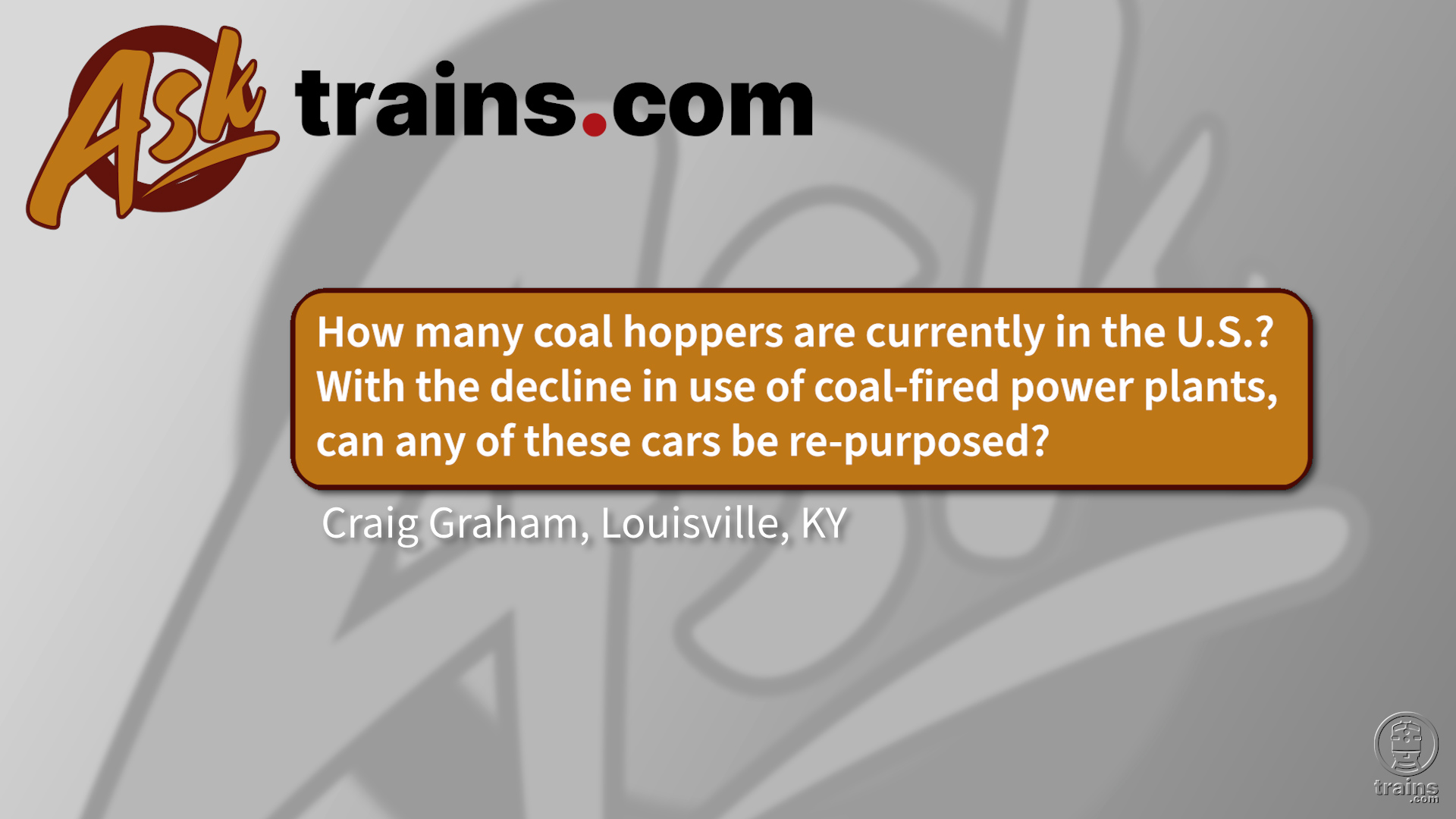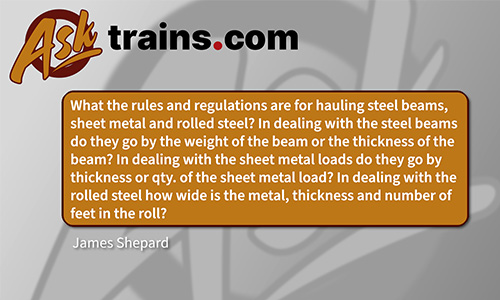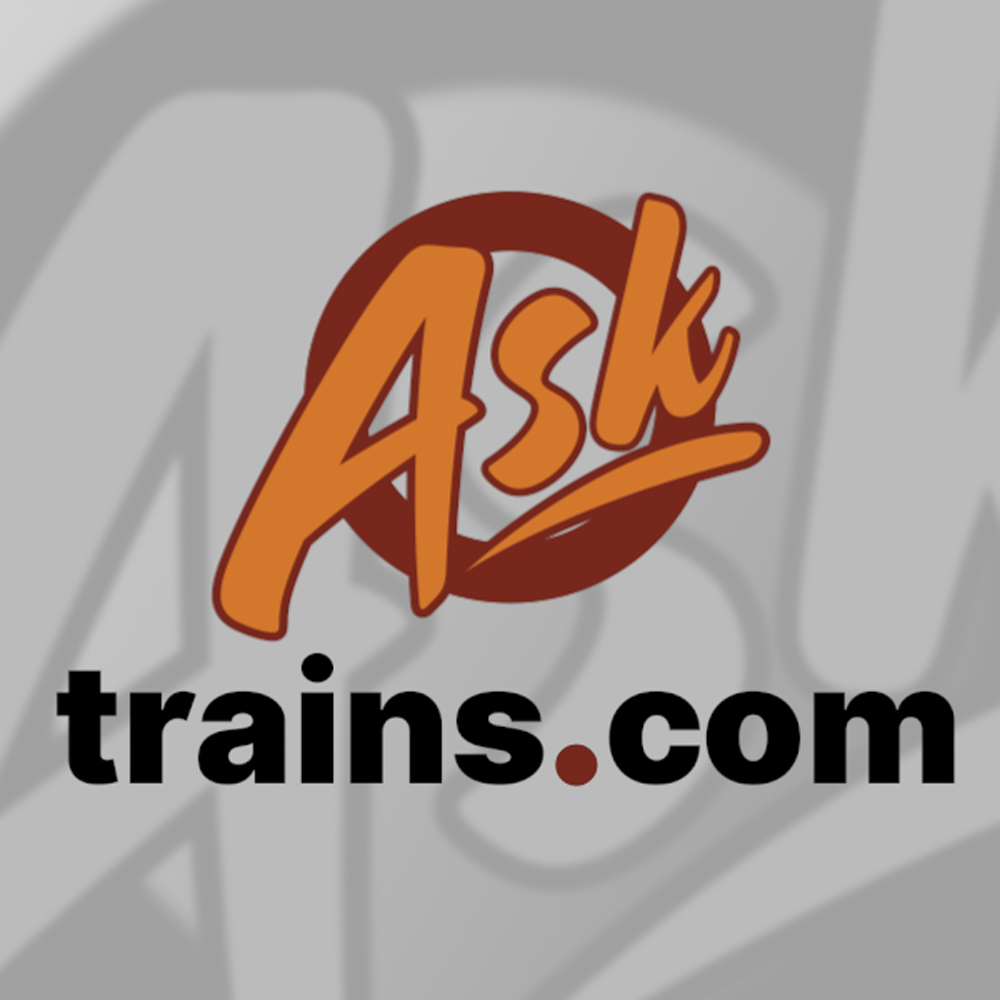pattern on the railheads within the diamond. They appear to be deliberate and not just from wear. Is there a reason for them, or are my eyes deceiving me?
— Ted Freeman, Toowoomba, Queensland, Australia
A In that photo, the shiny surfaces indeed show wheel wear, but also visible are the several components making up a diamond’s frog, and the delineations between each part of the frog. The castings with the flangeway cut into them are at the intersection. To connect these castings, a piece of rail is specially bent to attach to the casting and then flare out to become the running rail. This is called a “C” rail or a “Leg” rail, depending on the point of attachment. These pieces are cut and bent to a specification, since each diamond is a custom situation with varying factors such as angle of the crossing and number of tracks crossed. Measurements of the track centers of each track involved must also be considered when designing a diamond.
— Tom Hunter, engineer-signals, communication, and electrical, Elgin, Joliet & Eastern Railway
— Kent Hutchens, Creswell, Ore.
A The term “dapping” refers to a notch in a timber (or in this case, a crosstie) in preparation to receive another part of timber. Dapping is a popular practice in bridgework when railroads need to shim ties up for superelevation (when the outer rail is vertically higher than the inside rail to neutralize centrifugal force). For example, if the outer rail on bridgework is 12 inches high and the inner rail is 9 inches high, railroads can cut grooves (or dap out) in sections of the timber, allowing the height difference to taper off from the high end to the low end of the timber over the distance of the timber.
— Sayre C. Kos
— Greg Bensen, Whitewater, Wis.
A The term “set and centered” refers to a safety procedure designed to ensure the train won’t move while a crew member is breaking the plane of the equipment, whether by going between cars, hanging an end-of-train device, or performing an outbound Class I air test. The crew member requests this using whatever term his or her railroad requires. (For example, on Union Pacific, a crew member requests “red zone;” on Canadian National, it’s “going in between.”) By saying “set and centered,” the engineer is responding that he has set the locomotive’s brakes, and centered the reverser, much the same as putting a car in neutral. Northeastern Operating Rules Advisory Council (NORAC) also requires the locomotive’s generator field switch be moved down to the “off” position preventing the main generator from powering the traction motors accidentally, which leads to a term several railroads use: “Three-point protection.” In those cases, depending on the railroad, the engineer will respond, “Three point granted,” or, “Set, centered, and down.” Most railroads require the crew member who requested protection to tell the engineer he’s clear before work continues.
— Sayre C. Kos
— Thomas Skypeck, Clovis, Calif.
A The installation and maintenance of continuous welded rail (CWR) takes place in all types of weather and temperatures owing to the continuous operations of railroads. The most important issue to consider in working with CWR is maintaining the “neutral” temperature during installation or work. The neutral temperature is that at which the rail is at rest, not in compression or expansion owing to thermal stress (i.e., the expansion from heat above this neutral temperature and the contraction from cold below it). Each railroad has rules to ensure that, if rail is worked on – or disturbed – in any way, a measurement of the rail temperature is taken and a determination made on whether the work will cause the rail to lose its neutral setting, and if so, what adjustments are required to readjust the rail back to the specification. All rail steel has the same expansion coefficient for this calculation. The calculation of the amount of stretch or shorting of a piece of CWR to “fix” it to the desired neutral temperature is: (Td-Ta) x L x E = A, where “Td” is the desired neutral temperature, “Ta” the actual rail temperature, “L” the length of the piece of welded rail, “E” the coefficient of rail steel (0.000078), and “A” the adjustment required, in inches. All temperatures are expressed in Fahrenheit.
— Tom Hunter
— Jan H. Garner, Columbus, Ohio
A In a phrase: instant recognition of red. First, yellow was not always in the middle. Lights on C&O signals were (from the top) red, yellow, and green for the upper target head, and yellow, green, and red on the head second from the top. C&O had a couple of reasons for using this arrangement.
Under C&O signal aspects, a single red light meant “stop and proceed,” meaning a train encountering this signal should stop, but then could proceed at restricted speed. A double red light indicated “stop and stay.” The reds were placed farthest apart so that from a distance, an approaching train’s crew could tell that the signal indication had two red lights and not one. On intermediate signals with two targets, the bottom target would simply go dark to display “stop and proceed.” Both targets of an absolute signal, on the other hand, would remain lit. These distinct arrangements also allowed engineers to interpret the indications just by seeing the location of the light on the signal.
— Jason Nates, licensed locomotive engineer
— Mark D. Bej, Grafton, Ohio
A Water in lineside towers did sometimes freeze, but rarely to solid ice. Some railroads, such as Canadian Pacific, installed a pumphouse whose pump circulated the water, keeping it from becoming stagnant and freezing. Other roads enclosed the tub of the tank in an outer shell that insulated the tank and provided space for a stove below the tub to keep the water warm. Also, railroads would install the riser (the pipe running from the underground water source up to the tub) deep enough underground to prevent freezing, and insulate it above ground.
— Sayre C. Kos













